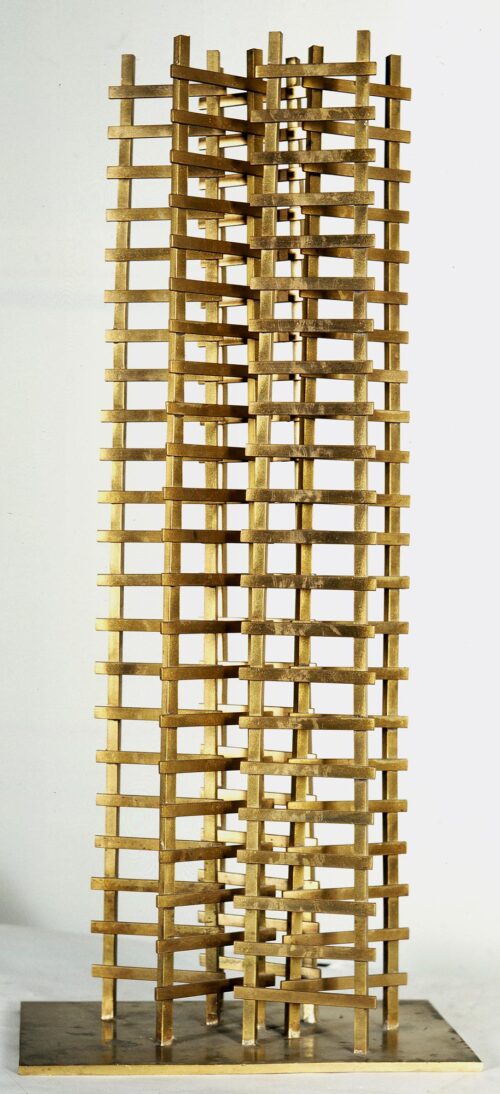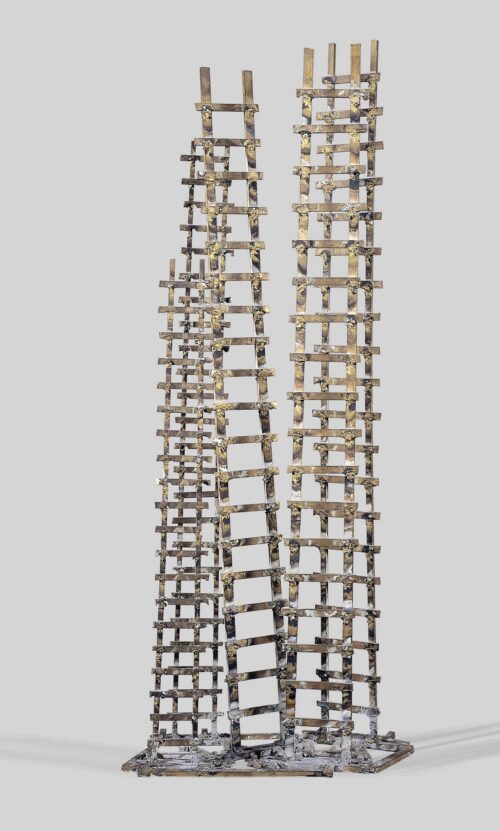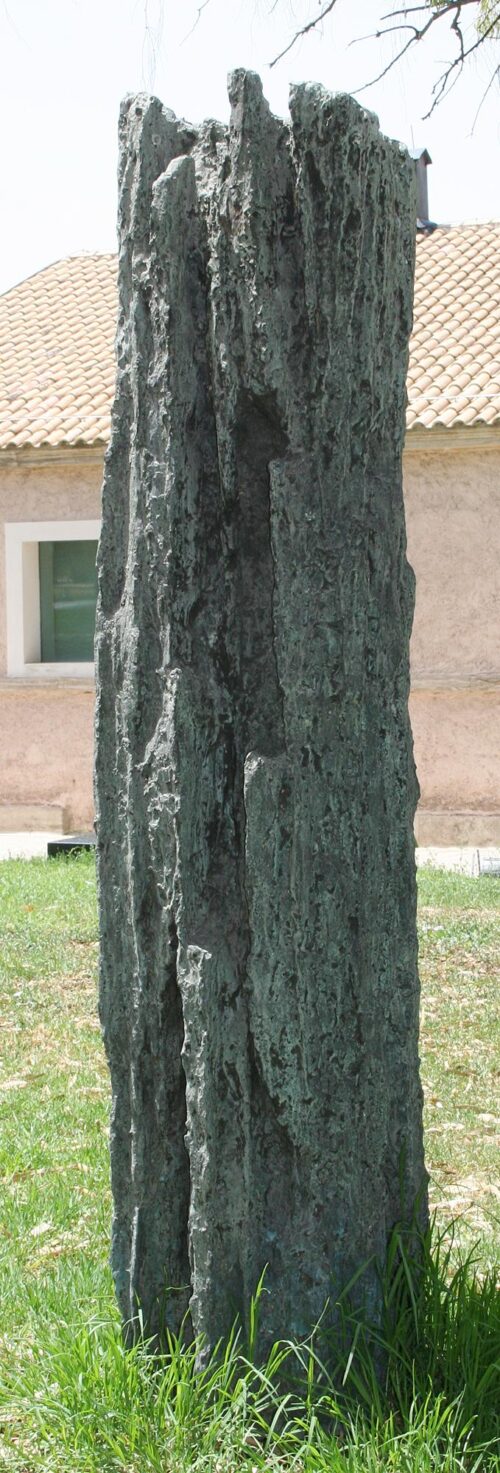
Aperghis Achilleas (1909 - 1986)
Ladders, [c. 1978]
His aptitude for art manifested itself at a very early age. That being the case, by 1918 he had already enrolled in the Night Art School of Corfu, where for two years he took drawing lessons. After a period of commercial activity, he entered the Athens School of Fine Arts in 1937 where until 1939 he studied sculpture under Thomas Thomopoulos, Kostas Dimitriadis and Michalis Tombros.
His artistic career commenced with figurative works which included busts and full-figure statues, nudes primarily. After World War II, and particularly after 1950, he turned toward more abstract forms, staying in an anthropocentric framework at first, but in the end moving on to complete abstraction.
Even in his earliest absract works the endeavor to limit the volume while developing the figure in space is apparent, sometimes stressing the vertical and other times the horizontal. Until 1960 he created his compositions using iron rods welded together, and though these works are based on the principles of Constructivism, they are closer to Expressionism. A short while later, after changing from iron to bronze and setting the rods in a vertical arrangement, he would create works which resembled objects corroded by time, giving the impression a disaster had occurred. Sticking to the same style, the arrangement was later changed to the horizontal and even later to the diagonal, suggesting a feeling of flight through space.
After a period given over to deep reflection and inertia, he would then leave behind purely sculptural depiction and turn to a conceptual approach to the problems that occupied him. The environment / installation called “Five Rooms”, which in 1976 he presented in Paris and Athens, expresses this turn and the artist’ s existential anguish with great exactitude. This is an environment whice combines objects, images, sounds and lighting, and consists of five differing spaces, themselves thematic entities. In each room a philosophical question is put forth, while various symbols refer to the realization of the relativity of things. In 1982 he presented “Cave”, another environment / installation, this time constructed of newspapers which covered the wall in combination with a cinematic projection and various sounds, through which he would express his existential anxieties in yet another way.
He continued his quests using environments and installations, but he then began to combine these with a return to a more plastic rendering. His environments called “Ladders”, which where presented for the first time in 1978, originally made of wood but later bronze, as well as isolated compositions with stairs of various sizes, constitute signs of ascent and endeavor and further suggest an outlet through knowledge. In 1985 steel ladders 20 meters high were erected in Palaio Faliro.
The various stages the artist’s work went through were presented in a number of exhibitions, beginning with appearances in Panhellenics. In 1955 his first solo exhibition was held in Athens with works done in bronze to be followed by various other events organized both within Greece and abroad. He also took part in important group and international exhibitions, such as the Venice Biennale, in 1956 and 1968, the Sao Paolo and Alexandria Biennales in 1957, repeated appearances at the Salon de la Jeune Sculpture in Paris and finally at the Europalia in Brussels in 1982.

Ladders, [c. 1978]

Composition, 1963

Ladders, [c. 1978]

Solitude, 1966

We use cookies to make our site work properly, to personalize content and ads, to provide social media features and to analyze our traffic. We also share information about how you use our site with our social media, advertising and analytics partners. Read the Cookies Policy.
These cookies are necessary for the website to function and cannot be switched off in our systems. They are usually only set in response to actions made by you which amount to a request for services, such as setting your privacy preferences, logging in or filling in forms. You can set your browser to block or alert you about these cookies, but some parts of the site will not then work. These cookies do not store any personally identifiable information.
If you disable this cookie, we will not be able to save your preferences. This means that every time you visit this website you will need to enable or disable cookies again.
These cookies tell us about how you use the site and they help us to make it better. For example these cookies count the number of visitors to our website and see how visitors move around when they are using it. This helps us to improve the way our site works, for example, by ensuring that users find what they are looking for easily. Our website uses Google Analytics for statistics reporting.
Please enable Strictly Necessary Cookies first so that we can save your preferences!